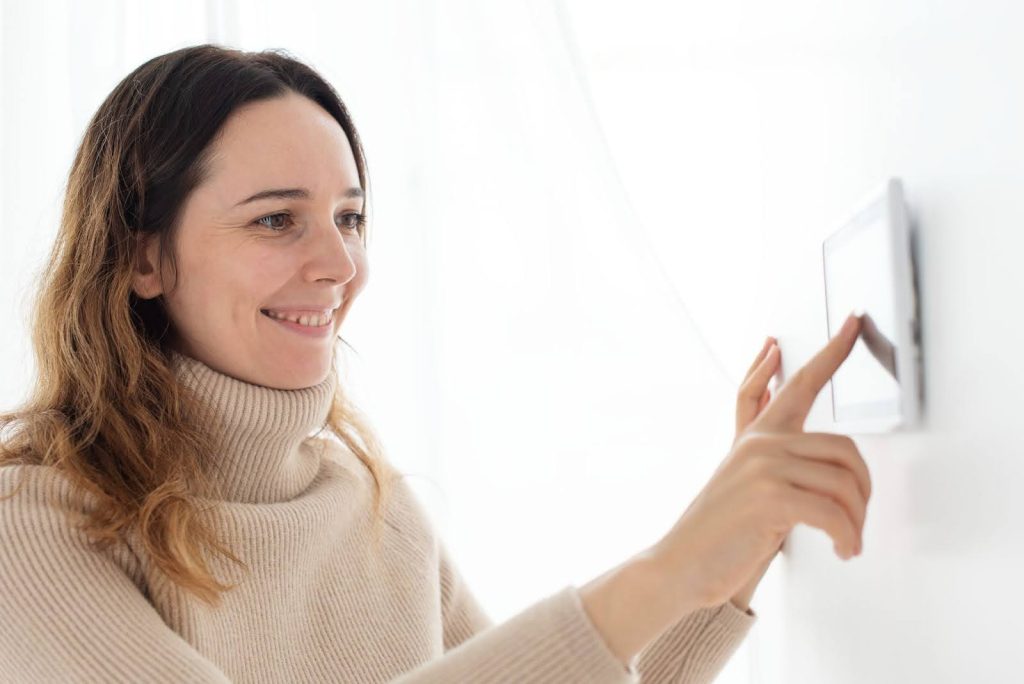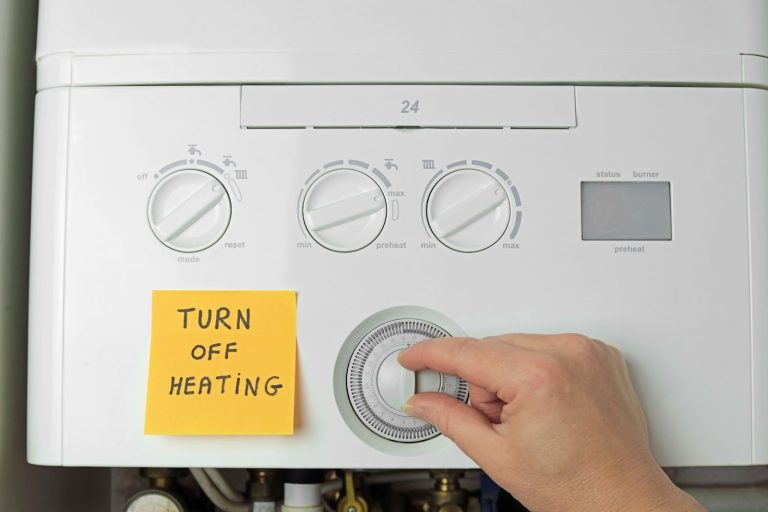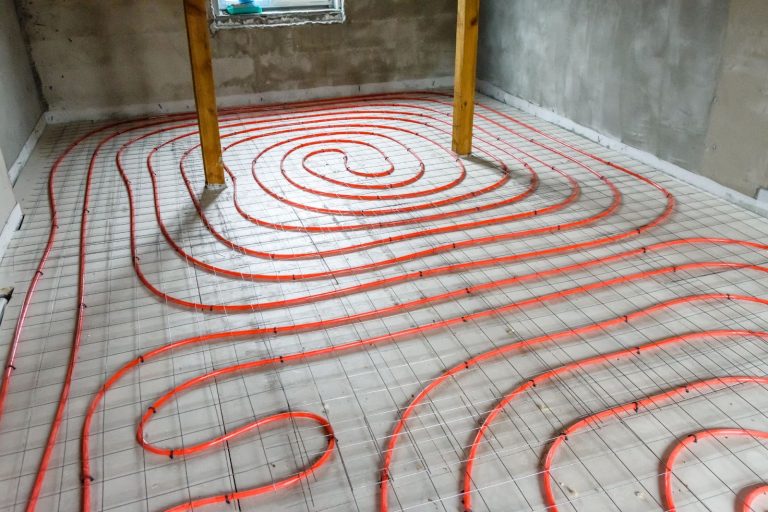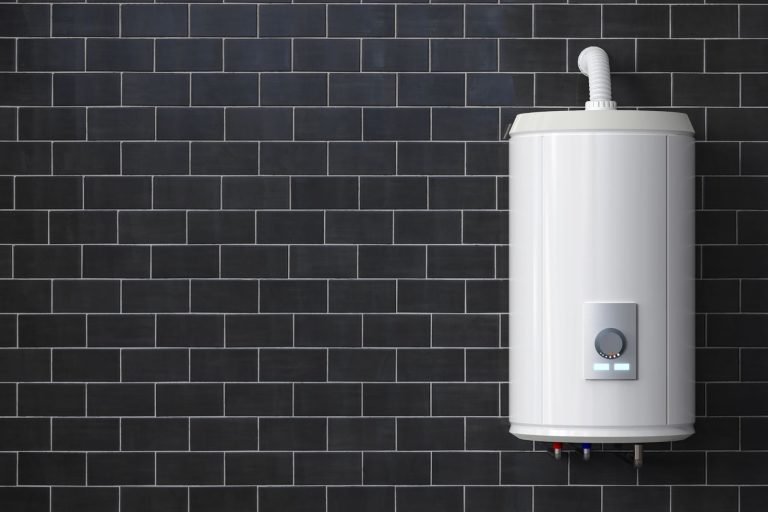Are you struggling to keep your home at the perfect temperature? Connecting a wireless thermostat to your boiler might be the solution you need. Wireless thermostats communicate with your boiler using radio frequency signals, which means there’s no need for messy wiring or complex installations.
This technology offers the convenience of adjusting your heating from any part of your house using a mobile phone, tablet, or even voice commands through virtual assistants like Google Assistant and Amazon Alexa.
In this article, we’ll guide you through how to link a wireless thermostat with your boiler in simple steps. From selecting the right spot for installation to ensuring compatibility between devices, we’ve got you covered.
Learn how this upgrade can lead not only to enhanced thermal comfort but also contribute significantly towards energy savings and cost reduction in your home. Ready to take control of your heating? Let’s get started!

Key Takeaways
- A wireless thermostat lets you adjust your home’s heating from your phone or tablet, saving energy and money.
- Make sure the thermostat and boiler are compatible before installing to ensure a smooth setup.
- Smart thermostats can link with smart home devices, letting you control heating with voice commands.
How Does a Wireless Thermostat Work with a Boiler?
A wireless thermostat communicates with the boiler using radio frequency signals. It can remotely control the heating system, adjusting the temperature according to your preferences. This means you don’t need wires between the thermostat and the boiler, making installation easier.
You can adjust room temperature, set schedules, and sometimes even control hot water.
Smart thermostats take this a step further by connecting to your Wi-Fi network. This lets you manage your central heating from a mobile phone or tablet, no matter where you are. Whether it’s turning on the heat before you arrive home or adjusting settings while on holiday, remote control is at your fingertips.

These devices help make your heating system more energy efficient and can save money on bills.
Steps for Installing a Wireless Thermostat
Finding the ideal spot for your wireless thermostat is essential. It should be in a central location, away from radiators, direct sunlight, and any household items that could block its signals.
This ensures it reads the room’s temperature accurately and communicates effectively with your boiler.
Next, ensure your receiver and thermostat are compatible before installing them. This step is crucial for a seamless connection between your devices.
Checking receiver and thermostat compatibility
After picking the perfect spot for your thermostat, it’s crucial to ensure that the receiver and thermostat can work together seamlessly. Most modern boilers, including combi, system, and heat-only types, support a wide range of wireless thermostats.
However, you need to double-check compatibility before proceeding. Look at the specifications of both your boiler and the thermostat. They should share compatible frequencies and connection types.
Make sure also to consider whether your home network supports the integration with smart home systems if you aim for this functionality. This ensures smooth communication between devices without needing additional equipment like wire connectors or an Ethernet cable.
Always consult the user manuals or manufacturer’s websites for detailed compatibility information to avoid any issues during installation or use.
Connecting the receiver to the boiler
Turn off the mains supply to ensure safety before starting. Locate the receiver and boiler’s connection points, usually found near the circuit breaker or power socket. Connect the receiver to the boiler using an Ethernet cable, if required by your model.
This setup allows for communication between them without needing wires across rooms.
Ensure compatibility between your wireless thermostat and electric boiler, as most are designed to work with combi, system, and heat-only boilers. Securely attach plugs into both the receiver and boiler, then switch on the mains supply again.
Check lights or indicators on both devices to confirm a successful link has been established.
Connecting the thermostat to the receiver
Make sure the thermostat is in pairing mode to link it with the receiver. This involves pressing a button on the device or following prompts on its display. The process allows them to communicate using radio frequency signals, removing the need for direct wiring.
Next, activate the receiver’s pairing mode. It usually has a specific button or sequence of buttons you’ll press. Once both devices are in pairing mode, they should find each other and connect automatically.
This connection lets you control your boiler remotely, boosting energy efficiency and enabling cost savings with your programmable thermostat.
Requirements for Connecting a Wireless Thermostat to a Boiler
You’ll need an internet connection, an Ethernet cable, and a power supply for the thermostat to make the connection. Read on to learn more about how to connect a wireless thermostat to your boiler!
The process often involves a hub that connects to your home router, linking the thermostat and boiler over the internet.
Different manufacturers might have varied methods for this connection. However, most systems use a similar approach requiring an ethernet cable. This setup enables remote control of your heating system, allowing adjustments via smartphones or computers, which can lead to energy savings and lower bills.

Ethernet cable
After ensuring an internet connection, the next step is to consider the use of an Ethernet cable for connecting a wireless thermostat to a boiler. Unlike internet connectivity, the process does not necessitate an Ethernet cable, as wireless thermostats communicate with boilers using radio frequency signals instead of physical connections.
This enables flexibility in thermostat placement and eliminates the need for wiring directly to the boiler.
Furthermore, it’s essential to note that modern wireless thermostats do not rely on an Ethernet cable connection when integrating with various types of boilers such as combi, system, heat-only boilers or electric boilers.
Power supply for the thermostat
To operate wirelessly, the thermostat needs a power supply, usually from batteries. Smart thermostats are designed to be energy-efficient and can run for long periods on a single set of batteries.
This ensures uninterrupted control and monitoring of your heating system without the need for constant battery replacement. With these wireless capabilities, you can conveniently manage your home’s temperature with ease while maximising energy efficiency.
Smart thermostats eliminate the need for a constant power connection by using battery power or rechargeable lithium-ion batteries. This setup offers flexibility in choosing its placement within your home without worrying about proximity to power sources.
Advantages of Using a Wireless Thermostat for Your Boiler
Control your boiler’s temperature remotely. Save on energy and costs with smart home integration.
Remote temperature control
A wireless thermostat allows remote control of your boiler’s temperature from a mobile device, giving you the flexibility to adjust the heating settings wherever you are. This means you can easily increase or decrease the temperature in your home using an app on your smartphone, providing convenience and comfort at your fingertips.
Additionally, this feature also enables you to efficiently manage energy usage by adjusting the temperature based on your schedule or when away from home, contributing to cost savings and energy efficiency.
Integrating a wireless thermostat with your boiler system provides an easy-to-use solution for maintaining optimal room temperatures throughout the day without being physically present, enhancing overall comfort and convenience within your home.
Energy efficiency
To optimise energy efficiency, wireless thermostats provide precise control over heating, reducing unnecessary usage. This directly impacts reduced energy consumption and lowers heating costs.
Viessmann’s gas condensing boilers further enhance energy efficiency, making them an excellent choice for cost-effective and eco-friendly home heating solutions.
Connecting a wireless thermostat to your boiler is not just about convenience – it’s also about enhancing the overall energy efficiency of your home heating system.
Cost savings
Using a wireless thermostat with your boiler can lead to cost savings by allowing you to remotely control the heating, ensuring it’s only used when needed. This helps reduce energy wastage and lowers your overall heating bills.
Additionally, electric boilers are known for their low operating costs, contributing to long-term savings on your energy expenses.
By integrating smart technology into your heating system, you can potentially save money while also benefiting from improved comfort and convenience within your home.
Integrating with smart home systems
Smart thermostats can integrate with popular smart home systems such as Apple HomeKit and Amazon Alexa, allowing you to control your heating using voice commands or through the respective apps.
This integration provides seamless connectivity and enhances the overall convenience of managing your home’s temperature, aligning with the trend of interconnected smart devices in modern households.























